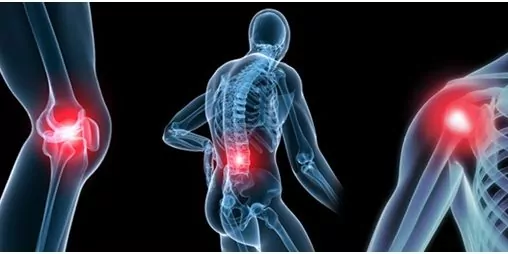Dr. Abhimanyu Rana

Joint pain (hips, knees, shoulders)
Joint pain, affecting areas such as the hips, knees, and shoulders, is a widespread and often debilitating condition that can significantly impact a person's mobility, daily activities, and overall quality of life. It is a common symptom of various underlying causes, ranging from acute injuries to chronic conditions, and it becomes more prevalent with age. Understanding the causes, symptoms, diagnosis, and management of joint pain is essential for effective treatment and improved well-being.
Joint pain can arise due to a variety of factors. Acute joint injuries, such as fractures, dislocations, or ligament tears, can lead to sudden and severe pain. Chronic conditions like osteoarthritis, rheumatoid arthritis, and gout can also cause persistent joint pain. Inflammatory diseases like bursitis and tendinitis affect the tissues surrounding the joint, resulting in discomfort and limited range of motion. Additionally, overuse and repetitive strain can contribute to joint pain, especially in individuals who engage in strenuous physical activities.
The symptoms of joint pain often include localized discomfort, swelling, stiffness, and reduced mobility. In more severe cases, individuals may experience difficulty performing everyday tasks, such as walking, lifting objects, or even dressing themselves. The pain may be aggravated by movement, weight-bearing, or certain positions.
Diagnosing the underlying cause of joint pain involves a combination of medical history, physical examination, and diagnostic tests. X-rays, MRI scans, and blood tests may be utilized to identify issues such as inflammation, structural abnormalities, or signs of degenerative conditions. Accurate diagnosis is crucial for determining the appropriate treatment approach.
Management strategies for joint pain are tailored to the underlying cause and severity of the condition. Conservative treatments often include rest, physical therapy, pain-relieving medications, and lifestyle modifications. Weight management is particularly important for joint pain in weight-bearing areas like the hips and knees, as excess weight can exacerbate discomfort.
In cases of inflammatory conditions, anti-inflammatory medications or disease-modifying drugs may be prescribed to reduce inflammation and slow disease progression. In some instances, corticosteroid injections can provide temporary relief by reducing inflammation within the affected joint.
For individuals with advanced joint degeneration or severe pain that doesn't respond to conservative treatments, surgical options may be considered. Joint replacement surgeries, such as hip or knee replacements, have shown remarkable success in improving mobility and alleviating pain in appropriately selected candidates.Preventive measures are vital for maintaining joint health and preventing future pain. Engaging in regular low-impact exercises, maintaining a healthy weight, and practicing proper posture can help reduce the risk of joint pain. Protective gear and proper technique are also essential in preventing acute joint injuries during sports and physical activities.
In conclusion, joint pain in areas like the hips, knees, and shoulders can be caused by a range of factors, from acute injuries to chronic conditions. Timely and accurate diagnosis, followed by appropriate treatment and management strategies, are crucial for improving quality of life and preserving joint function. Preventive measures play a significant role in reducing the risk of joint pain and maintaining overall musculoskeletal health. If you're experiencing persistent or severe joint pain, seeking medical attention from a healthcare professional is recommended to determine the underlying cause and receive appropriate care.

